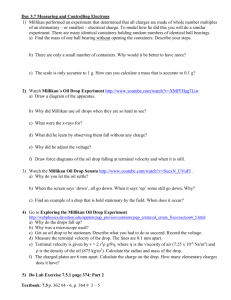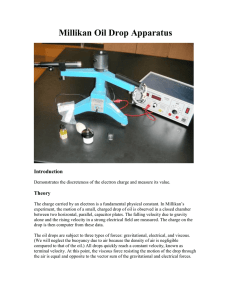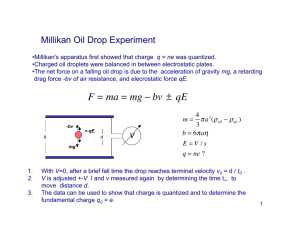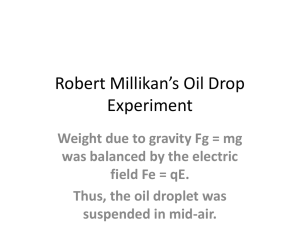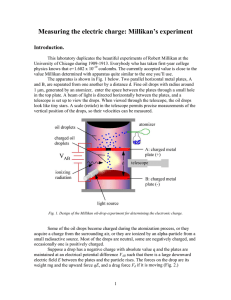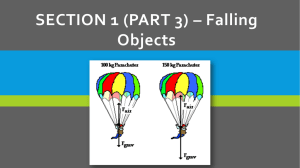Document 14141536
advertisement
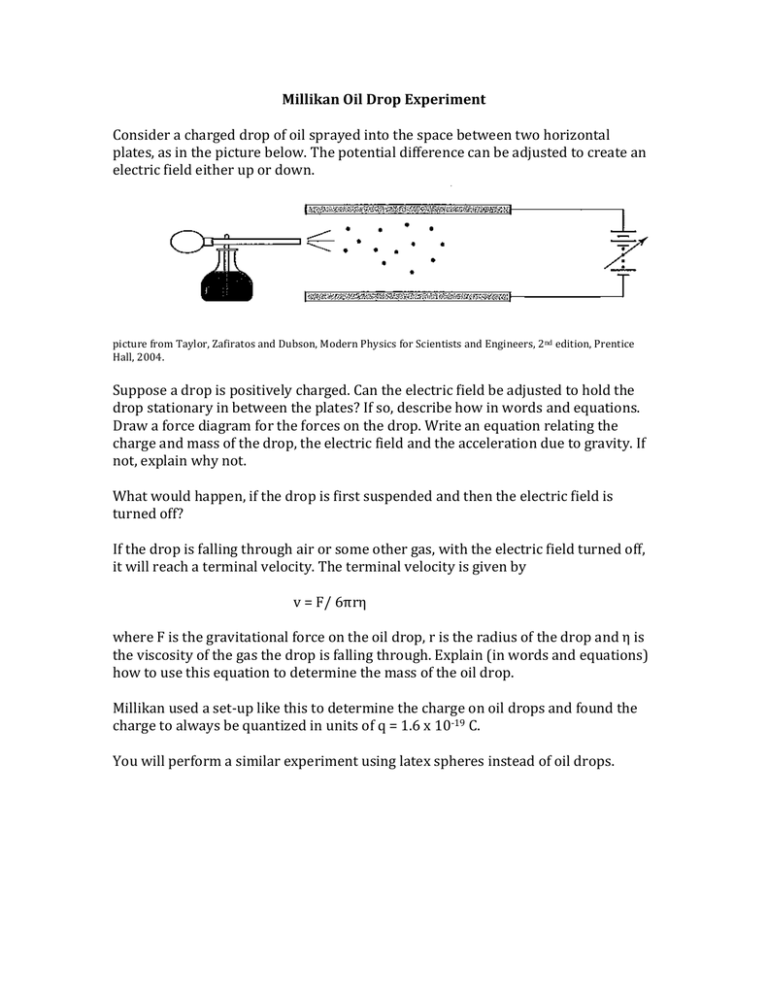
Millikan Oil Drop Experiment Consider a charged drop of oil sprayed into the space between two horizontal plates, as in the picture below. The potential difference can be adjusted to create an electric field either up or down. picture from Taylor, Zafiratos and Dubson, Modern Physics for Scientists and Engineers, 2nd edition, Prentice Hall, 2004. Suppose a drop is positively charged. Can the electric field be adjusted to hold the drop stationary in between the plates? If so, describe how in words and equations. Draw a force diagram for the forces on the drop. Write an equation relating the charge and mass of the drop, the electric field and the acceleration due to gravity. If not, explain why not. What would happen, if the drop is first suspended and then the electric field is turned off? If the drop is falling through air or some other gas, with the electric field turned off, it will reach a terminal velocity. The terminal velocity is given by v = F/ 6πrη where F is the gravitational force on the oil drop, r is the radius of the drop and η is the viscosity of the gas the drop is falling through. Explain (in words and equations) how to use this equation to determine the mass of the oil drop. Millikan used a set-­‐up like this to determine the charge on oil drops and found the charge to always be quantized in units of q = 1.6 x 10-­‐19 C. You will perform a similar experiment using latex spheres instead of oil drops.

